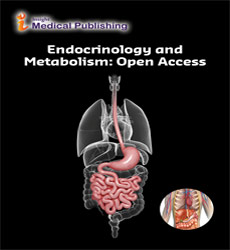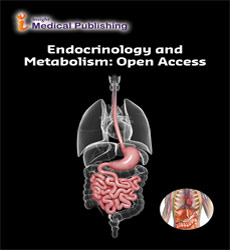Adrenal Incidentalomas: Diagnostic Approach and Clinical Decision-Making
Leana Nathan*
Department of Obstetrics and Gynecology, Medical University of Warsaw, 02-015 Warsaw, Poland
*Corresponding author:
Leana Nathan,
Department of Obstetrics and Gynecology, Medical University of Warsaw, 02-015 Warsaw, Poland,
E-mail: Nathan.leana@wum.edu.pl
Received date: February 01, 2025, Manuscript No. ipemoa-25-20742; Editor assigned date: February 03, 2025, PreQC No. ipemoa-25-20742 (PQ); Reviewed date: February 15, 2025, QC No. ipemoa-25-20742; Revised date: February 22, 2025, Manuscript No. ipemoa-25-20742 (R); Published date: February 28, 2025
Citation: Nathan L (2025) Adrenal Incidentalomas: Diagnostic Approach and Clinical Decision-Making. Endocrinol Metab Vol.09 No.1:05
Introduction
Adrenal incidentalomas are adrenal masses that are unexpectedly discovered during imaging performed for unrelated reasons. With the growing use of computed tomography, magnetic resonance imaging and positron emission tomography, the detection of these lesions has become increasingly common. Their prevalence is estimated at 1-5% in the general population, with higher rates among older adults. The clinical importance of adrenal incidentalomas lies in two principal concerns: the potential for hormonal hypersecretion and the risk of malignancy, particularly adrenocortical carcinoma or metastatic disease. An accurate diagnostic approach is therefore necessary to differentiate between benign and malignant lesions, as well as to determine whether a lesion is functioning or non-functioning. This evaluation is central to clinical decision-making, where the risks of unnecessary surgical intervention must be carefully weighed against the dangers of missing a hormonally active or malignant tumor [1].
Description
The epidemiology of adrenal incidentalomas reflects both metabolic and oncologic associations. Most lesions are benign non-functioning adenomas, yet a significant number may represent hormone-producing tumors, such as subclinical Cushingâ??s syndrome, pheochromocytomas, or aldosterone-producing adenomas. Although malignant lesions are relatively rare, their recognition is critical given their poor prognosis and the potential for delayed detection. Risk factors for malignancy include a personal history of cancer, rapid lesion growth and radiographic features suggestive of atypical tissue. Conditions such as obesity, type 2 diabetes and metabolic syndrome are often associated with non-functioning adenomas, highlighting possible links between adrenal pathophysiology and metabolic health [2].
The diagnostic process involves both biochemical and radiological evaluation. Biochemically, all patients should be screened for hormone hypersecretion, even in the absence of symptoms, as subclinical disease is common.
The 1-mg overnight dexamethasone suppression test remains the gold standard for assessing cortisol autonomy, while plasma or urinary metanephrines are essential to exclude pheochromocytoma. The aldosterone-to-renin ratio is indicated in hypertensive or hypokalemic patients to identify possible primary aldosteronism. Radiologically, non-contrast CT is the first-line tool, with lesions measuring less than 10 Hounsfield units typically representing lipid-rich adenomas. Washout studies, MRI chemical shift imaging and PET-CT may be used in indeterminate cases. Features such as lesion size greater than 4 cm, irregular morphology, heterogeneity, or high attenuation values suggest a higher risk of malignancy and may guide surgical decision-making [1].
Clinical management is based on the interplay between lesion functionality, imaging features and patient comorbidities. Small, non-functioning lesions with benign radiologic features are usually managed conservatively with periodic imaging and repeat hormonal assessment. If stable over several years, further follow-up may not be required. Functioning adenomas, however, generally warrant surgical excision. Cortisol-producing adenomas are resected particularly when associated with metabolic complications, while pheochromocytomas require removal after preoperative alpha-adrenergic blockade. Aldosterone-producing adenomas may be surgically removed in unilateral disease, though medical management is often appropriate for bilateral cases. Lesions with indeterminate or suspicious characteristics, especially those greater than 4 cm, are typically considered for surgery, as are those found in patients with a history of malignancy. In these scenarios, biopsy may be considered only when pheochromocytoma has been excluded [1].
Special considerations apply in elderly patients, where comorbidities and surgical risk may favor conservative management and in pediatric patients, where the risk of malignancy is higher and surgical intervention is often recommended. Pregnancy presents unique challenges, with management strategies tailored to maternal and fetal safety.
Recent advances in molecular profiling have identified mutations such as PRKACA, ARMC5 and TP53 that may guide prognosis and future therapeutic strategies. Additionally, machine learning models and artificial intelligence are emerging as tools to improve radiological interpretation and refine risk stratification. Importantly, the clinical implications of mild autonomous cortisol secretion are increasingly recognized, as even modest hormone excess may contribute to hypertension, obesity, osteoporosis and cardiovascular morbidity, thereby influencing treatment thresholds.
Conclusion
Adrenal incidentalomas present a growing diagnostic and clinical management challenge due to their rising detection rates and varied biological behavior. The cornerstone of evaluation lies in biochemical testing to rule out hormone hypersecretion and imaging assessment to estimate malignant potential.
Decision-making should be individualized, balancing the risks of surgery against the potential consequences of untreated functional or malignant disease. Most lesions are benign, non-functioning adenomas requiring surveillance, but functioning tumors and suspicious masses demand surgical intervention. Evolving research in genomics and imaging is expected to further refine diagnostic algorithms, while greater recognition of subclinical hormone secretion continues to reshape management strategies. Ultimately, a careful, evidence-based and patient-centered approach is essential to ensure optimal outcomes in the management of adrenal incidentalomas.
Acknowledgement
None.
Conflict of Interest
None.
References
- Kimber-Trojnar Z, Patro-Malysza J, Trojnar M, Kolarz DD, Oleszczuk J, et al. (2019) Umbilical Cord SFRP5 levels of term newborns in relation to normal and excessive gestational weight gain. Int J Mol Sci 20(3): 595.
Google Scholar Cross Ref Indexed at
- Prats-Puig A, Soriano-Rodríguez P, Carreras-Badosa G, Riera-Pérez E, Ros-Miquel M, et al. (2014) Balanced duo of anti-inflammatory SFRP5 and proinflammatory WNT5A in children. Pediatr Res 75(6): 793-797.

Open Access Journals
- Aquaculture & Veterinary Science
- Chemistry & Chemical Sciences
- Clinical Sciences
- Engineering
- General Science
- Genetics & Molecular Biology
- Health Care & Nursing
- Immunology & Microbiology
- Materials Science
- Mathematics & Physics
- Medical Sciences
- Neurology & Psychiatry
- Oncology & Cancer Science
- Pharmaceutical Sciences
